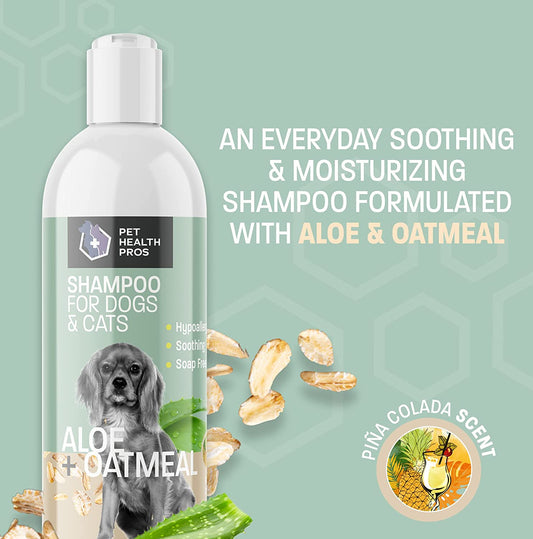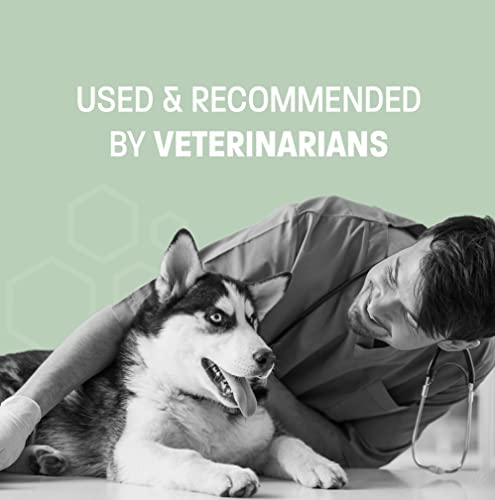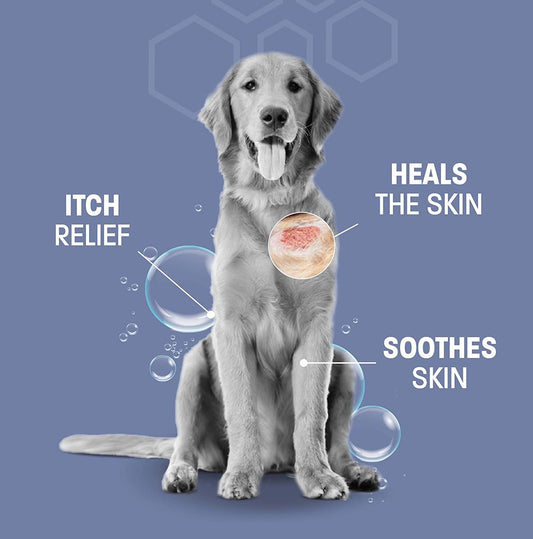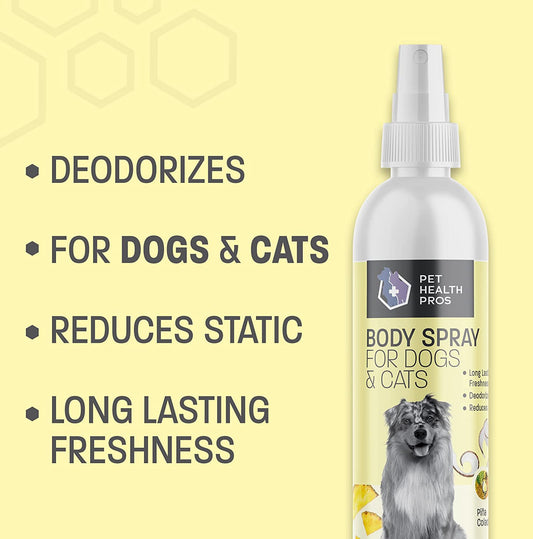Taking care of your dog's paws is super important, especially when it comes to preventing and treating fungal infections. These infections can cause discomfort and pain for your furry friend, so knowing how to choose and apply the right antifungal cream for dog paws is key. In this guide, we'll cover everything you need to know about fungal infections, how to select the best treatment, and tips for maintaining your dog's paw health.
Key Takeaways
- Fungal infections can be common in dogs, especially in moist environments.
- Look for antifungal creams with effective ingredients like miconazole or clotrimazole.
- Always check with your vet before starting any treatment for your dog's paws.
- Proper application and aftercare are crucial for effective treatment.
- Regular grooming and hygiene can help prevent fungal infections.
Understanding Fungal Infections In Dogs
Fungal infections can be a real pain for our furry friends, and understanding them is the first step in keeping your dog's paws healthy. It's not always obvious when your dog has a fungal issue, so knowing what to look for is super important. Let's break down the common types, symptoms, and causes.
Common Types Of Fungal Infections
There are a few different types of fungal infections that can affect dogs, but some are more common than others. Yeast infections, often caused by Malassezia pachydermatis, are probably the most frequent, especially in warm, moist areas like the paws. Ringworm, despite its name, is also a fungal infection and can show up on the paws as well. Other less common but still possible culprits include blastomycosis and aspergillosis, which are usually more systemic but can sometimes affect the skin, including the paws.
Symptoms To Watch For
Spotting a fungal infection early can make a big difference in how quickly your dog recovers. Here's what to keep an eye out for:
- Itching: Excessive licking or scratching at the paws is a big red flag.
- Redness and Inflammation: The skin between the toes or on the pads might look red and irritated.
- Swelling: The paws might appear puffy or swollen.
- Odor: A musty or foul smell coming from the paws can indicate a fungal issue.
- Discoloration: You might notice changes in the color of the nails or skin.
- Hair Loss: In some cases, the fur around the paws might start to thin out or fall out.
If you notice any of these symptoms, it's a good idea to check with your vet. Early treatment can prevent the infection from getting worse and causing more discomfort for your dog.
Causes Of Fungal Infections
Fungal infections can pop up for a variety of reasons. Sometimes, it's as simple as a weakened immune system making your dog more susceptible. Other times, it could be due to environmental factors. Here are some common causes:
- Weakened Immune System: Dogs with underlying health issues or those on certain medications might have a harder time fighting off fungal infections.
- Moisture: Fungi thrive in moist environments, so constantly wet paws are a breeding ground.
- Allergies: Allergic reactions can cause inflammation and skin damage, making it easier for fungi to take hold.
- Poor Hygiene: Not keeping the paws clean and dry can contribute to fungal growth.
- Contact with Infected Surfaces: Dogs can pick up fungal spores from contaminated soil, bedding, or other surfaces. Recognizing yeast infections early is key to preventing complications.
Choosing The Right Antifungal Cream For Dog Paws
So, your vet suspects your furry friend has a fungal infection on their paws? Don't worry, it happens! Picking the right antifungal cream is super important to get those paws back to normal. It's not just about grabbing the first thing you see at the store; you need to consider a few things to make sure you're helping, not hurting, your pup.
Key Ingredients To Look For
When you're scanning the labels, keep an eye out for a few key ingredients. These are the workhorses that fight off the fungus.
- Miconazole and ketoconazole are common antifungals that work well for many types of fungal infections. They disrupt the fungus's cell membrane, which basically stops it from growing.
- Look for creams that also contain soothing agents like aloe vera or oatmeal. These can help calm irritated skin and reduce itching, making your dog more comfortable.
- Some creams include chlorhexidine, which is an antibacterial agent. This can be helpful if there's a secondary bacterial infection happening alongside the fungus.
Safety Considerations
Safety first, always! Dogs are notorious for licking, so you need to make sure whatever you put on their paws is safe if ingested in small amounts.
- Avoid creams with high concentrations of steroids unless specifically prescribed by your vet. While steroids can reduce inflammation, they can also suppress the immune system and potentially worsen the infection in the long run.
- Make sure the product is specifically formulated for dogs. Human medications can sometimes contain ingredients that are harmful to animals.
- Always read the label carefully and follow the instructions. More isn't always better, and using too much cream can sometimes cause skin irritation or other side effects. If you are unsure, consult with your vet about antifungal options.
Consulting Your Veterinarian
I can't stress this enough: talk to your vet! While it's tempting to self-diagnose and treat, a vet can properly identify the type of fungus causing the problem and recommend the most effective treatment. Plus, they can rule out other potential causes of your dog's paw problems, like allergies or parasites.
Your vet might even suggest a specific brand or formulation that they've had good results with in the past. They can also give you personalized advice on how to apply the cream and monitor your dog's progress. It's always better to be safe than sorry when it comes to your pet's health!
How To Apply Antifungal Cream Effectively
Preparation Steps Before Application
Before you even think about applying that antifungal cream, a little prep work goes a long way. First, you've got to clean the affected paw. Use a mild, dog-friendly soap and lukewarm water. Gently wash the area to remove any dirt, debris, or loose fur. Make sure to rinse thoroughly to get rid of any soap residue, because that can actually irritate the skin further. After washing, pat the paw completely dry with a clean towel. Moisture is the enemy here, as it can encourage fungal growth. Finally, if your dog has long fur around their paws, consider carefully trimming it. This helps the cream reach the skin more effectively and keeps the area dry.
Application Techniques
Alright, now for the main event. Grab your antifungal cream and a pair of disposable gloves – this is for your hygiene and to prevent spreading the infection. Apply a small amount of cream to the affected area. Don't go overboard; a thin layer is all you need. Gently massage the cream into the skin, making sure it covers the entire infected area. The goal is to ensure the cream penetrates the skin properly. If your dog is likely to lick the cream off, you might want to use an Elizabethan collar (the cone of shame) to prevent them from doing so. Distract them with a toy or a treat to keep their mind off their paws.
Post-Application Care
After applying the cream, it's important to keep the area clean and dry. Try to prevent your dog from licking or scratching at their paws. The Elizabethan collar can be helpful here, especially right after application. Avoid taking your dog for walks in muddy or wet areas immediately after applying the cream. Check the paw regularly for any signs of irritation or worsening infection. If you notice anything unusual, like increased redness, swelling, or discharge, contact your vet right away. Consistency is key, so stick to the application schedule recommended by your vet or the product instructions. Remember, patience is a virtue; it can take several weeks to see significant improvement.
After applying antifungal cream, monitor your dog's paws for any adverse reactions. If you observe increased redness, swelling, or discharge, consult your veterinarian promptly. Consistent application and maintaining a clean environment are vital for effective treatment and preventing recurrence.
Preventing Fungal Infections In Dog Paws
It's way easier to stop a problem before it starts, right? Same goes for fungal infections in your dog's paws. A little prevention can save your pup (and your wallet) from a lot of discomfort and vet bills. Here's how to keep those paws healthy and fungus-free.
Maintaining Paw Hygiene
Keeping your dog's paws clean and dry is a big deal. Think of it like this: fungi love moisture. So, if you can minimize the moisture, you minimize the risk. Here's what I do:
- Regular Washing: After walks, especially if it's been wet or muddy, I give my dog's paws a quick wash with mild soap and water. Nothing fancy, just enough to get the grime off.
- Thorough Drying: This is super important. I use a soft towel to dry each paw, making sure to get in between the toes. You can even use a low-heat hairdryer if your dog tolerates it.
- Paw Wipes: On days when a full wash isn't needed, I use paw wipes to clean off any surface dirt. They're convenient and help keep things tidy. You can find some good paw wipes at most pet stores.
Environmental Considerations
Where your dog walks and plays matters a lot. Certain environments are just breeding grounds for fungi. Here's what I watch out for:
- Avoid Damp Areas: I try to keep my dog away from stagnant water, puddles, and overly damp grass. These are prime spots for fungal growth.
- Clean Up After Your Dog: Fungi can thrive in dog waste, so I always clean up promptly after my dog does his business. It's just good hygiene, plus it helps prevent the spread of infection.
- Disinfect Common Areas: If you have multiple pets, or if your dog frequents dog parks, consider disinfecting common areas regularly. This can help kill off any lingering fungi.
Regular Vet Check-Ups
Regular vet visits are key for catching any problems early. Your vet can spot signs of a fungal infection even before they become obvious to you. Plus, they can give you personalized advice on how to keep your dog's paws healthy. Think of it as preventative maintenance for your pup.
I always make sure to bring up any concerns I have about my dog's paws during our regular vet visits. It's better to be safe than sorry, and my vet has always been great about giving me tips and advice. Plus, they can do a quick check to make sure everything looks good. It's a small thing that makes a big difference.
Top Antifungal Creams For Dog Paws
Alright, let's get into some specific products. Finding the right antifungal cream can feel like a treasure hunt, but knowing what's out there is half the battle. I've done some digging, looked at ingredients, and considered what other dog owners are saying to give you a solid starting point.
Product Reviews And Recommendations
Okay, so here are a few antifungal creams that seem to pop up consistently in conversations about treating dog paw issues. Remember, what works for one dog might not work for another, so always keep an eye on how your pup reacts and chat with your vet if you're unsure.
- Miconazole Nitrate Creams: These are pretty common and often effective against a range of fungal infections. You can usually find them over the counter, but it's always good to double-check the concentration and ingredients.
- Ketoconazole Creams: Similar to miconazole, ketoconazole is another antifungal that's often recommended. It's worth noting that some dogs might be more sensitive to it, so watch for any signs of irritation.
- Clotrimazole Creams: This is another option that's frequently used. It's generally considered safe, but again, keep an eye out for any adverse reactions.
Comparative Analysis Of Ingredients
When you're comparing antifungal creams, it's not just about the active ingredient. The other stuff in there matters too! You want to avoid anything that could irritate your dog's paws further, like harsh chemicals or fragrances. Here's a quick rundown:
- Active Antifungal Ingredients: Miconazole, ketoconazole, and clotrimazole are the big ones. They each work a little differently, but all aim to kill the fungus.
- Inactive Ingredients: Look for creams with soothing ingredients like aloe vera or vitamin E. Avoid anything with alcohol or strong perfumes.
- Concentration: The concentration of the active ingredient can vary. A higher concentration isn't always better, especially if your dog has sensitive skin.
It's a good idea to do a small patch test before applying any cream to your dog's entire paw. Just put a tiny bit on a small area and see if there's any reaction within 24 hours. If everything looks good, you're probably safe to proceed.
User Experiences And Testimonials
Real-world experiences can be super helpful. Here's what some dog owners have said about different antifungal creams:
- Positive: Many owners report seeing improvements within a week or two of using miconazole or ketoconazole creams. They often mention that consistency is key – applying the cream as directed is crucial.
- Negative: Some owners have noted that their dogs lick the cream off, which can reduce its effectiveness. Others have reported mild skin irritation, especially with higher-concentration creams. Consider using an Elizabethan collar to prevent licking.
- Mixed: A few owners have said that certain creams worked initially but then seemed to lose effectiveness over time. This could be due to the fungus developing resistance, so it's something to keep in mind.
Signs Your Dog Needs Veterinary Attention
It's super important to keep a close eye on your dog's paws. Sometimes, what seems like a minor issue can actually be a sign of something more serious going on. Knowing when to handle things at home and when to call the vet can make a big difference in your dog's health and comfort.
When To Seek Help
Sometimes, it's obvious that your dog needs to see a vet. If you notice any sudden or severe changes in their paws, it's best to err on the side of caution. Don't wait and see if it gets better on its own, especially if your dog is in obvious pain. Here are some situations where a vet visit is definitely needed:
- Severe Lameness: If your dog is suddenly unable to put weight on a paw or is limping badly, it's time to call the vet. This could indicate a fracture, dislocation, or a deep infection.
- Excessive Bleeding: Any uncontrolled bleeding from the paws needs immediate attention. This could be from a cut, puncture wound, or a more serious underlying condition.
- Rapid Swelling: If a paw swells up quickly and dramatically, it could be a sign of an allergic reaction, infection, or even a tumor.
- Obvious Signs of Infection: Pus, foul odor, or significant redness are all signs of infection that need veterinary treatment.
Understanding Severity Of Symptoms
Not all paw problems are created equal. Some are minor and can be managed at home, while others require immediate veterinary intervention. It's important to assess the severity of the symptoms to determine the best course of action. For example, a little bit of redness between the toes might just be a mild irritation, but intense redness combined with swelling and pain is a different story. Keep an eye on how your dog is behaving too. If they're constantly licking or chewing at their paws, that's a sign that something is bothering them. If you suspect ringworm in dogs diagnosis, seek veterinary care.
Potential Complications
Ignoring paw problems can lead to some pretty nasty complications. Infections can spread, causing more pain and discomfort. Chronic inflammation can develop, leading to long-term issues. In severe cases, untreated infections can even become systemic, affecting other parts of the body. Plus, if your dog is constantly licking or chewing at their paws, they could develop secondary skin infections or granulomas (inflamed nodules). It's always better to address paw problems early on to prevent these complications from happening.
Early intervention is key to preventing minor paw issues from escalating into serious health problems. Regular paw checks and prompt veterinary attention when needed can significantly improve your dog's quality of life.
Maintaining Overall Paw Health
It's easy to focus on treating problems when they pop up, but keeping your dog's paws in good shape all the time is super important. Think of it like brushing your teeth – you do it regularly to prevent cavities, not just when you have a toothache. Paw health is the same deal. Regular care can stop infections and other issues before they even start.
Importance Of Regular Grooming
Grooming isn't just about making your dog look good; it's a key part of paw care. Regular trimming of the fur between your dog's toes can prevent dirt and moisture from getting trapped, which can lead to fungal or bacterial infections. Here's what you should be doing:
- Trim the fur around and between the paw pads. Use blunt-nosed scissors to avoid accidental cuts.
- Check for any foreign objects like thorns, pebbles, or burrs after walks. Remove them carefully.
- Clean your dog's paws with a damp cloth after being outside, especially if they've been in muddy or dirty areas.
Nutritional Support For Healthy Paws
What your dog eats affects their whole body, including their paws. A balanced diet with the right nutrients can keep their skin and paw pads strong and healthy. Consider these points:
- Make sure your dog's food has enough omega-3 and omega-6 fatty acids. These help keep the skin moisturized and reduce inflammation.
- Talk to your vet about whether your dog needs any supplements, like biotin or vitamin E, which can support skin and coat health.
- Always provide fresh, clean water to keep your dog hydrated, which is important for overall skin health.
Seasonal Care Tips
Paw care needs change with the seasons. What works in the summer might not be enough in the winter. Here’s a quick guide:
- Summer: Hot pavement can burn your dog's paws. Walk them during cooler parts of the day or use paw wax to protect them.
- Winter: Salt and de-icing chemicals can irritate paw pads. Rinse their paws after walks and consider using dog booties.
- Spring and Fall: Allergens like pollen can cause itchy paws. Regular cleaning can help remove allergens and reduce irritation.
Paying attention to your dog's paws year-round can make a big difference in their comfort and health. Simple steps like regular cleaning, proper nutrition, and seasonal adjustments can help prevent problems and keep your furry friend happy and active.
Keeping your pet's paws healthy is super important! Regularly check their paws for cuts, dirt, or anything stuck between their toes. Make sure to trim their nails and keep the fur around their paws neat. If you notice any problems, don’t wait—visit our website for tips and products that can help keep your furry friend's paws in great shape!
Final Thoughts on Keeping Your Dog's Paws Healthy
In conclusion, taking care of your dog's paws is super important for their overall health. Choosing the right antifungal cream can make a big difference, especially if your pup is prone to infections. Remember to look for products that are safe and effective, and always follow the instructions. Regularly check your dog's paws for any signs of trouble, like redness or swelling. If you notice anything unusual, don’t hesitate to reach out to your vet. Keeping your dog's feet healthy means more happy walks and playtime together!
Frequently Asked Questions
What are the most common fungal infections in dogs?
The most common fungal infections in dogs include ringworm, yeast infections, and fungal infections caused by mold.
How can I tell if my dog has a fungal infection?
Look for signs like itching, redness, swelling, or unusual odors coming from their paws. If you notice these symptoms, it might be a fungal infection.
What should I look for in an antifungal cream?
Choose creams with ingredients like clotrimazole or miconazole, as these are effective against many fungal infections.
Is it safe to use antifungal creams meant for humans on dogs?
No, it’s important to use products specifically designed for dogs, as human products can be harmful to pets.
How often should I apply the antifungal cream?
Follow the instructions on the product label or your vet’s advice. Typically, you may need to apply it once or twice a day.
When should I take my dog to the vet for a paw issue?
If the symptoms persist, worsen, or if your dog seems to be in pain, it's best to consult your veterinarian.








